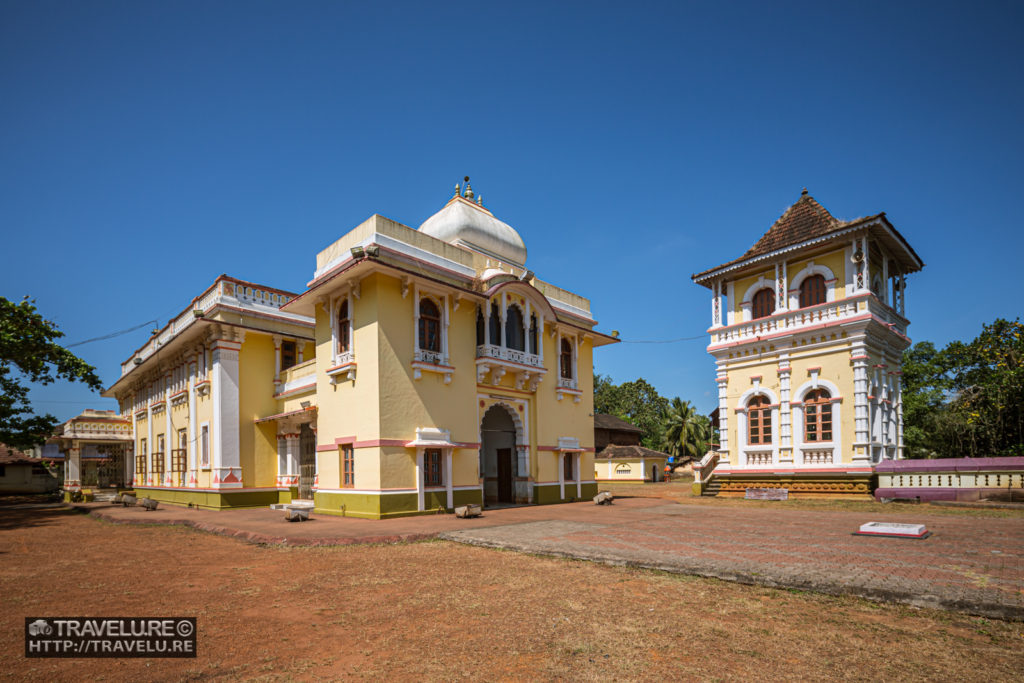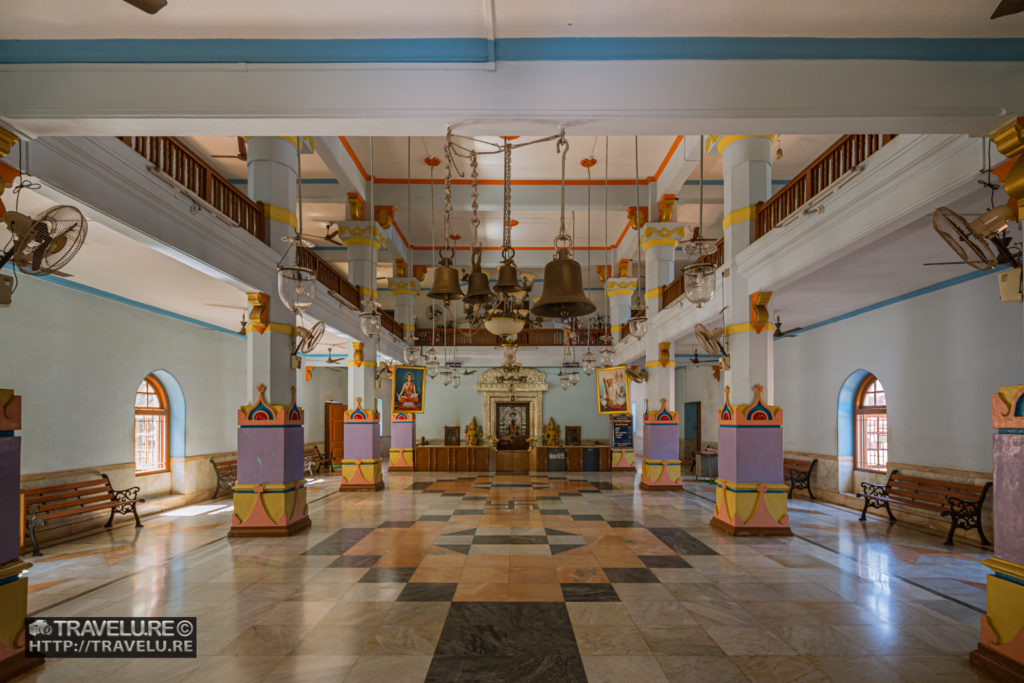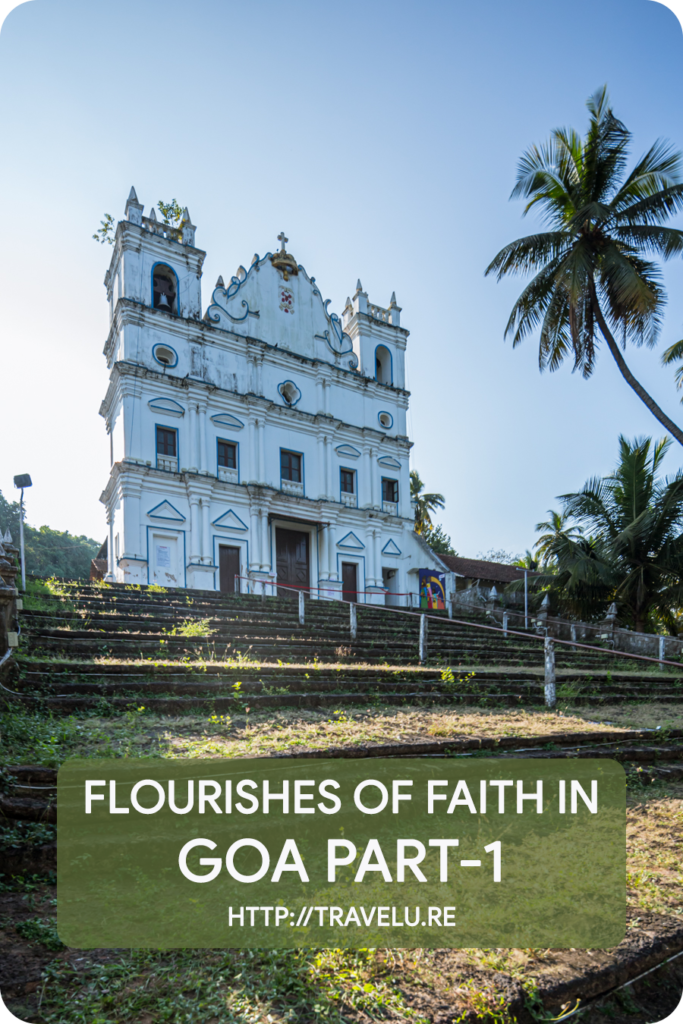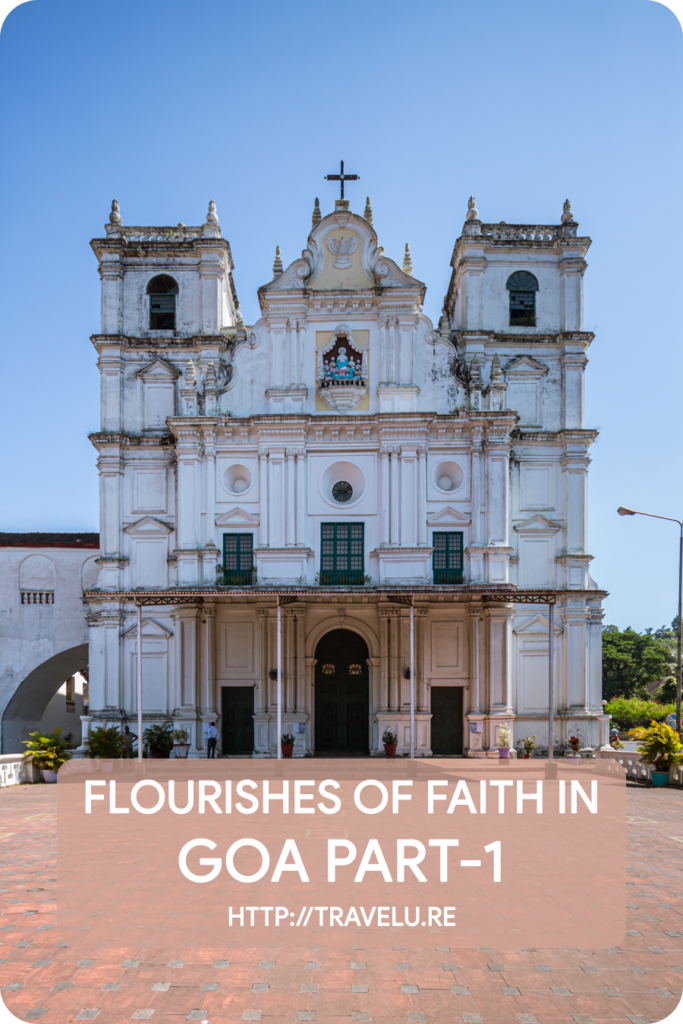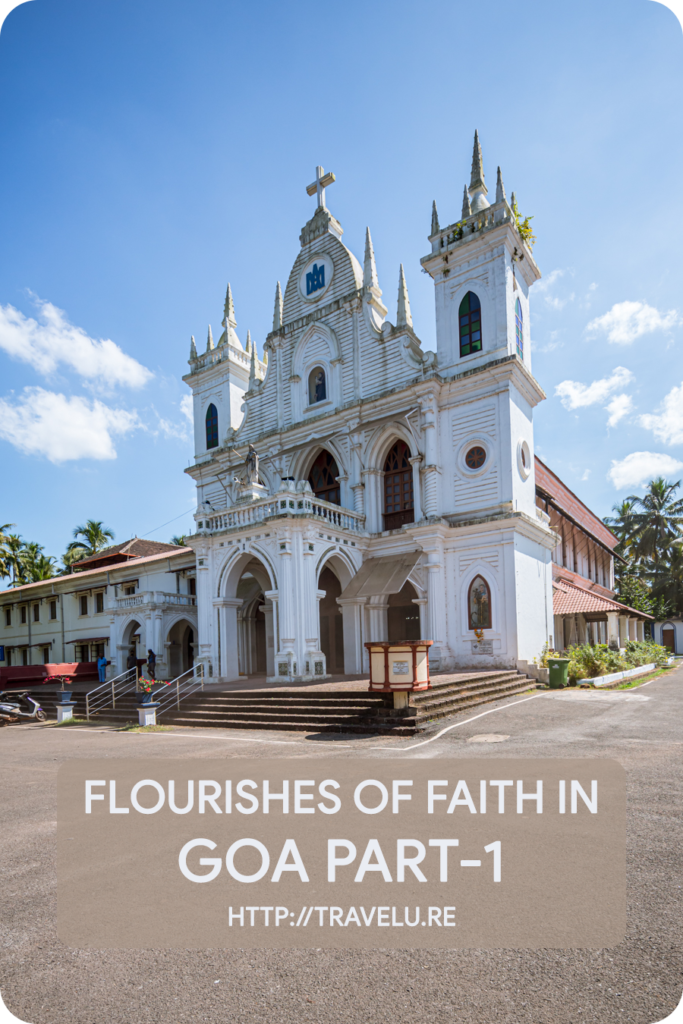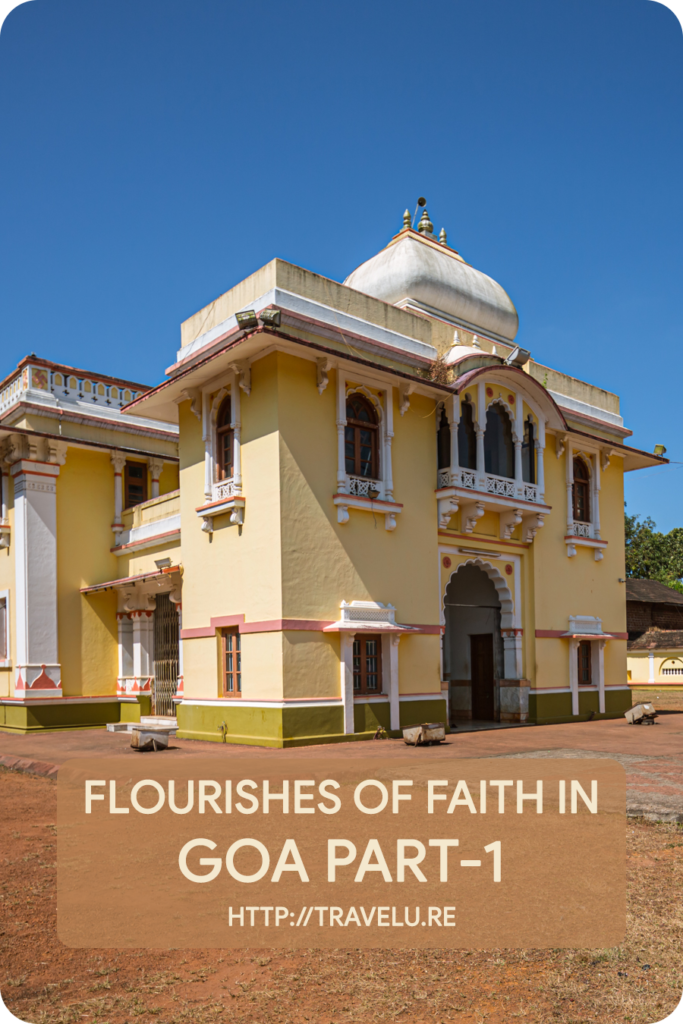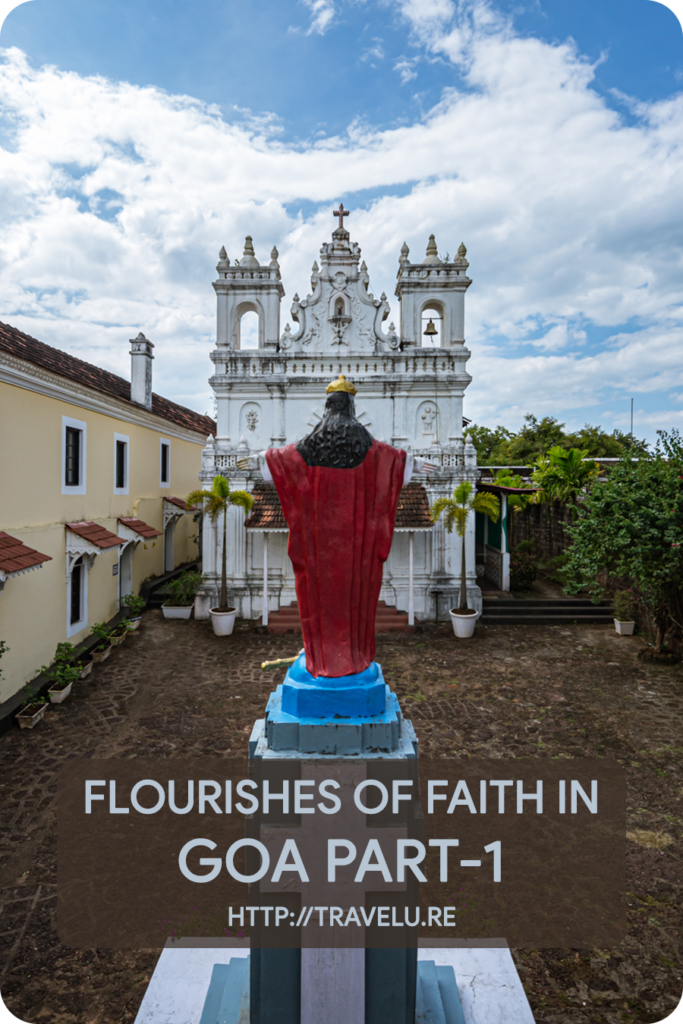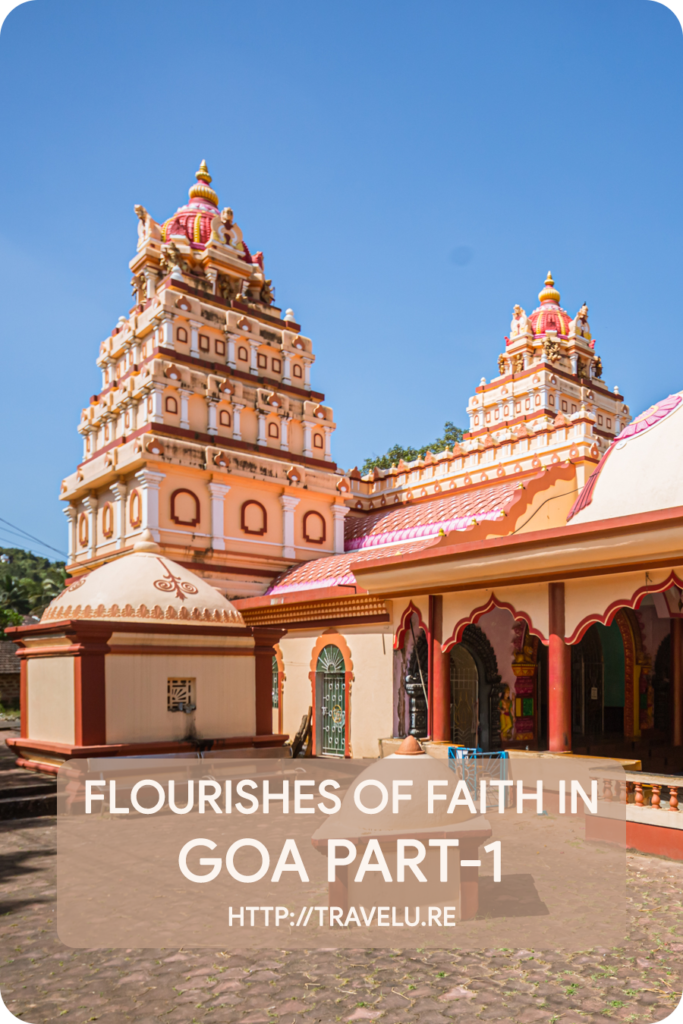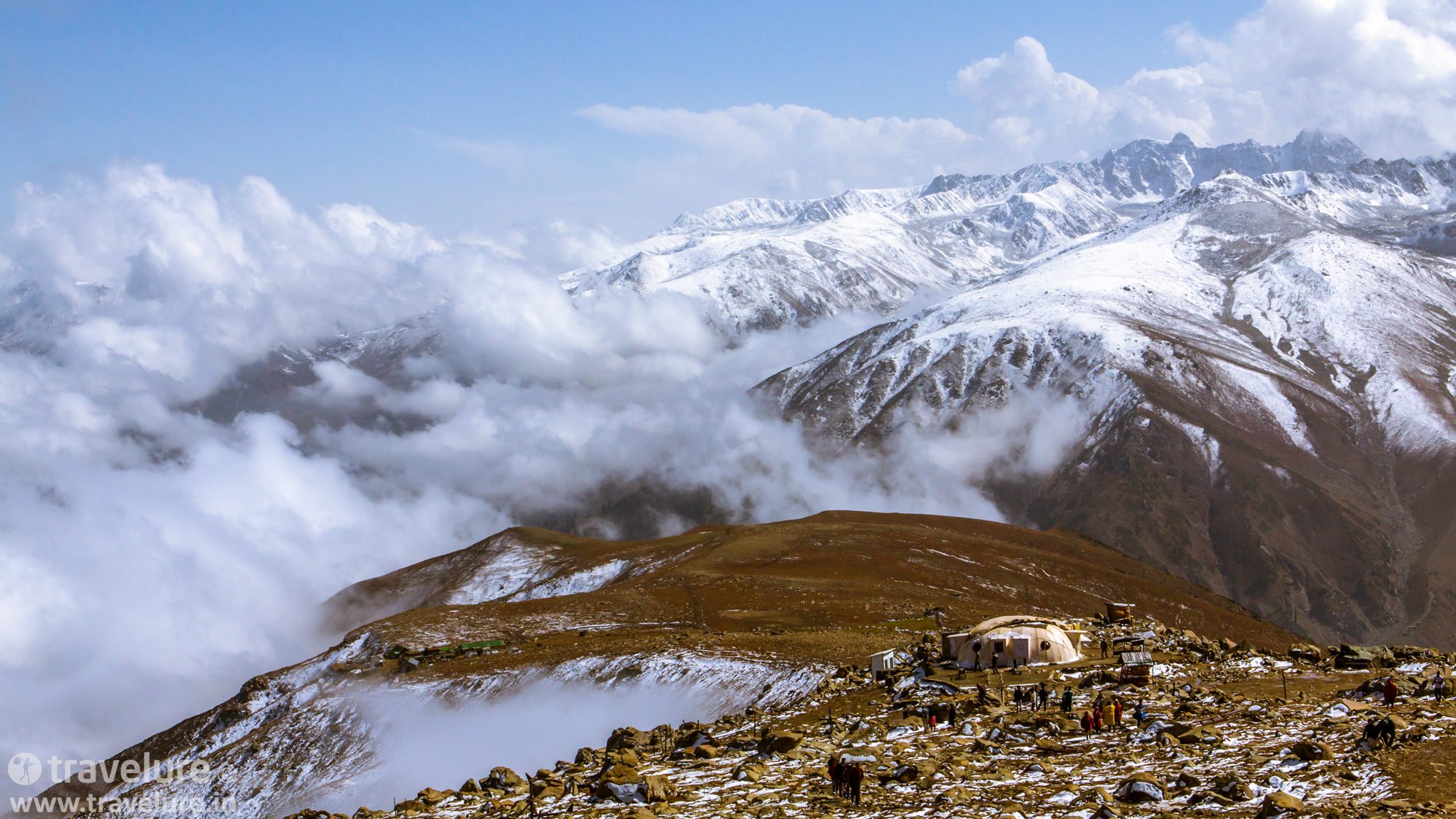Flourishes of Faith in Goa Part-1
A Hindu kingdom till the mid-14th century, and later ruled by Muslim rulers, Goa has seen the most extended and persisting influence of non-native faith imposed on the locals. For a region inhabited since the Neolithic period, Goa ended up at a strange crossroad of peaceful coexistence of religions. While many Hindu temples exist here, innumerable Portuguese churches sprang up all around the region. Even the military forts housed shrines – both Hindu and Christian.
Many of these structures of faith date back centuries. In this post, let us feast our eyes on some sterling edifices that include a few from the UNESCO-listed ‘Churches and Convents of Goa’!
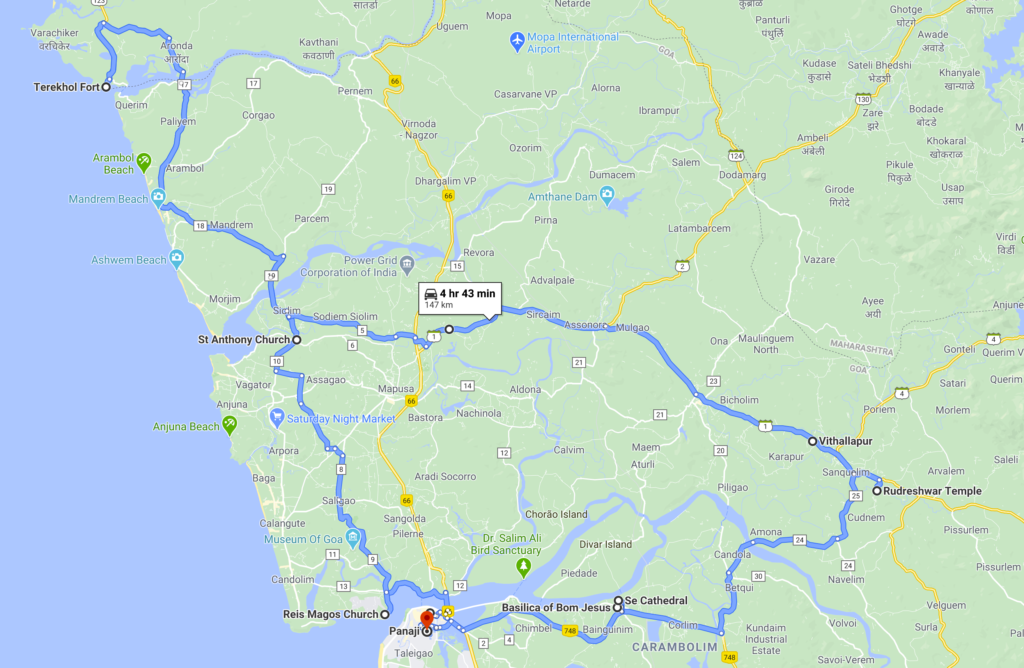
You may use each part of this guide as an itinerary. These glittering gems are sprinkled all across this coastal state. So, for sanity and order, I’ll use Panjim as the midpoint and categorise these as North, East, Southeast, and South of Panjim. Let me share some interesting finds.
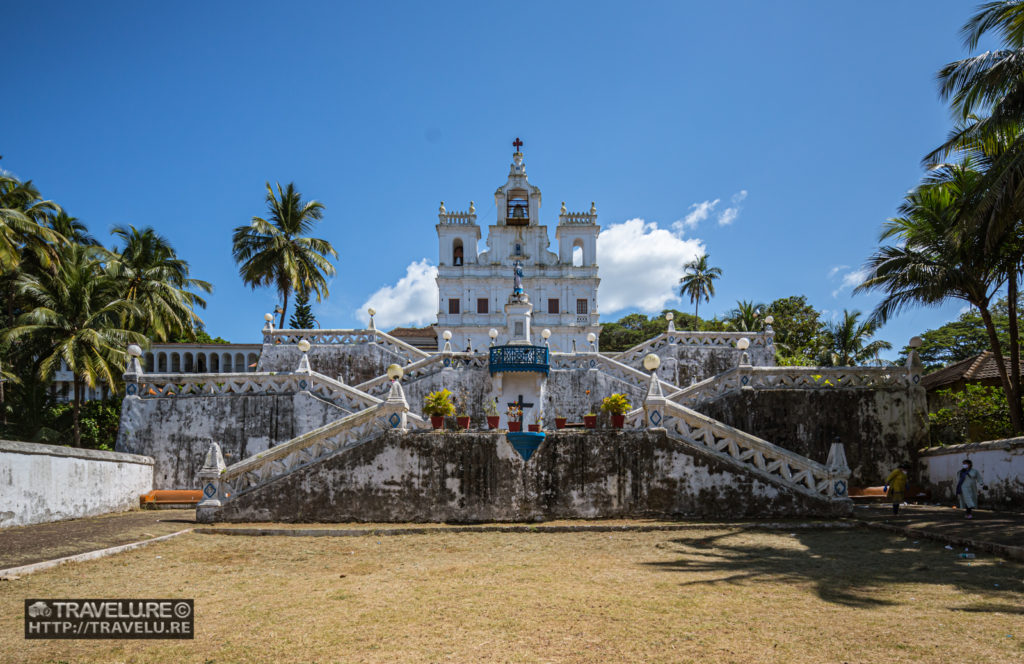
Places of Worship North of Panjim
In Panjim, on the periphery of Fontainhas, lies Our Lady of Immaculate Conception Church. First built in 1541 and later replaced by a larger church in the 1600s, Our Lady of Immaculate Conception Church is a prominent landmark in Panjim. Since it sits atop a hill, for the convenience of devotees, they added a symmetrical zig zag staircase to it in the eighteenth century.
Across the Mandovi River in Nerul, the magnificent Reis Magos Church stands at the foot of the hill that houses Fort Reis Magos. Its name means ‘three magi’ (three wise men) in Portuguese. Visible from across the Mandovi River, this 16th-century church used to play host to all visiting church dignitaries.
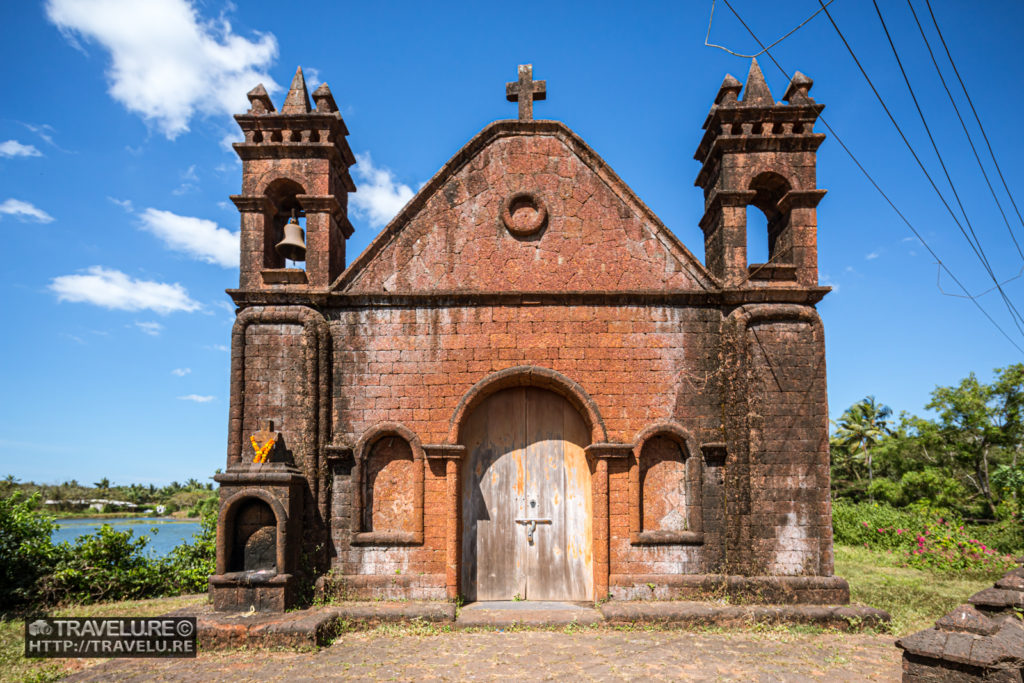
Driving north from Calangute, the first structure to catch your eye would be a beautiful, yet desolate, facade. This church is not in use, but its edifice is stunning. Standing apart in open vista, its enigma pulls you. I’ll just call it an unnamed church. This locked and deserted rust-brown building’s glory is unmistakable.
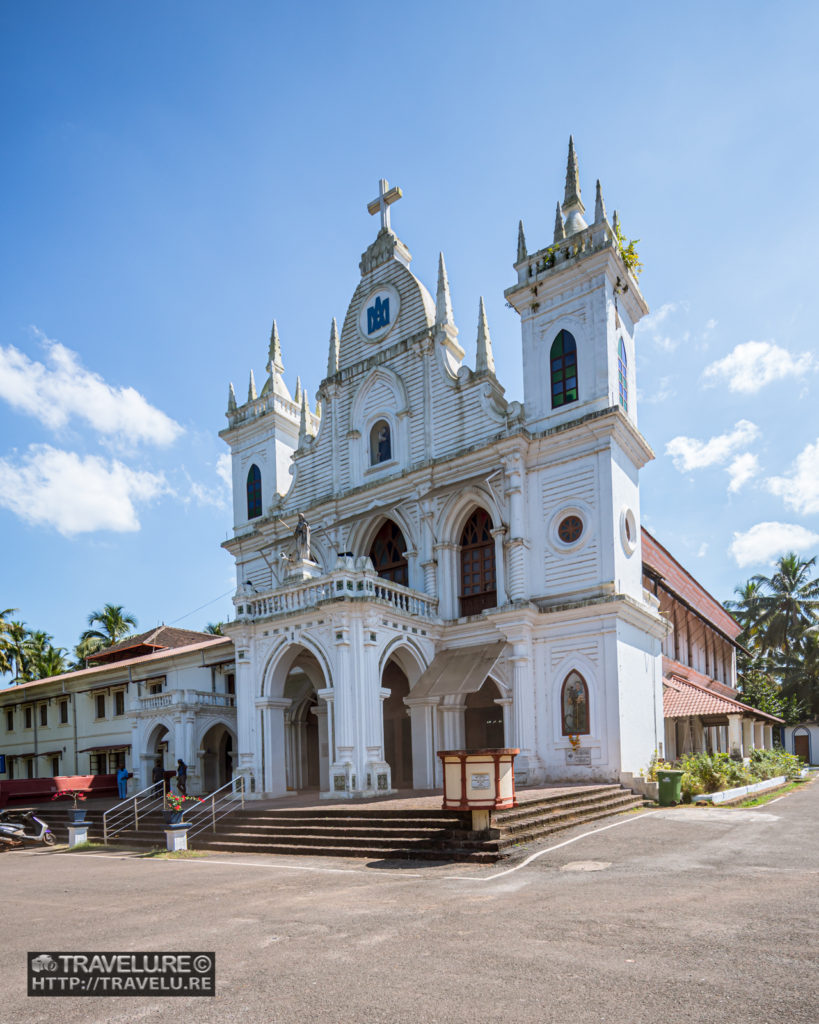
Further North
I discover a gigantic church. St Anthony’s at Siolim. First built in 1600 CE, it served the people for 300 years. A new neo-gothic church, started in 1902 and completed in 1907, exists here today.
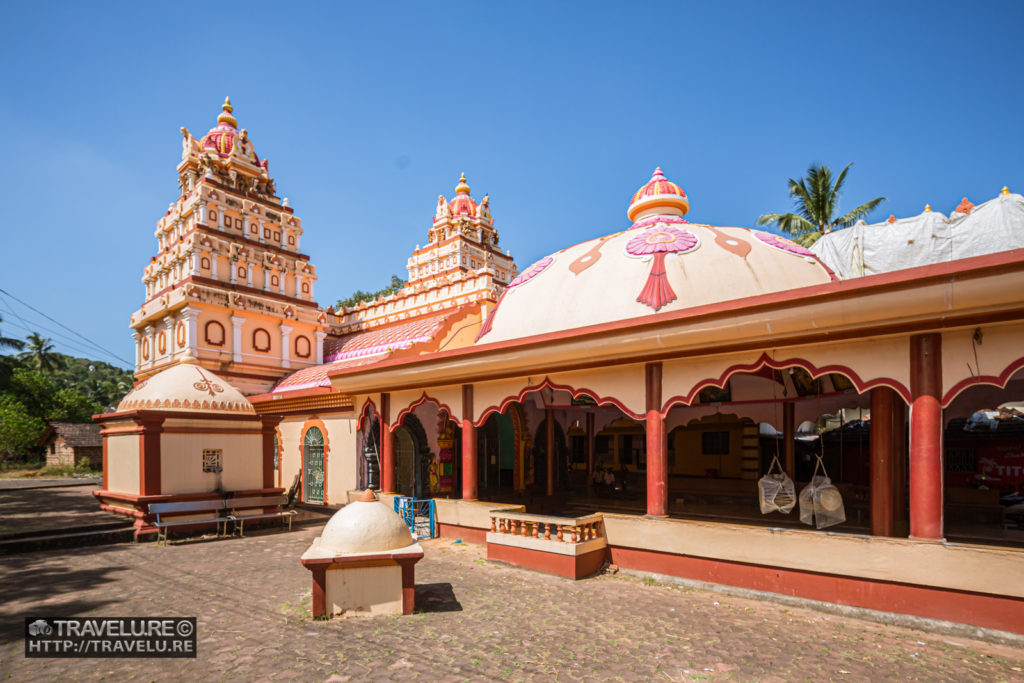
As you head further north, you pass by Shridev Bhumikav Vetal Prasann, a temple in Paliyem (Pernem taluka) where devotees worship Lord Shiva as Shri Vetal, his warrior form. This massive temple seems a mismatch for a tiny village that houses it.
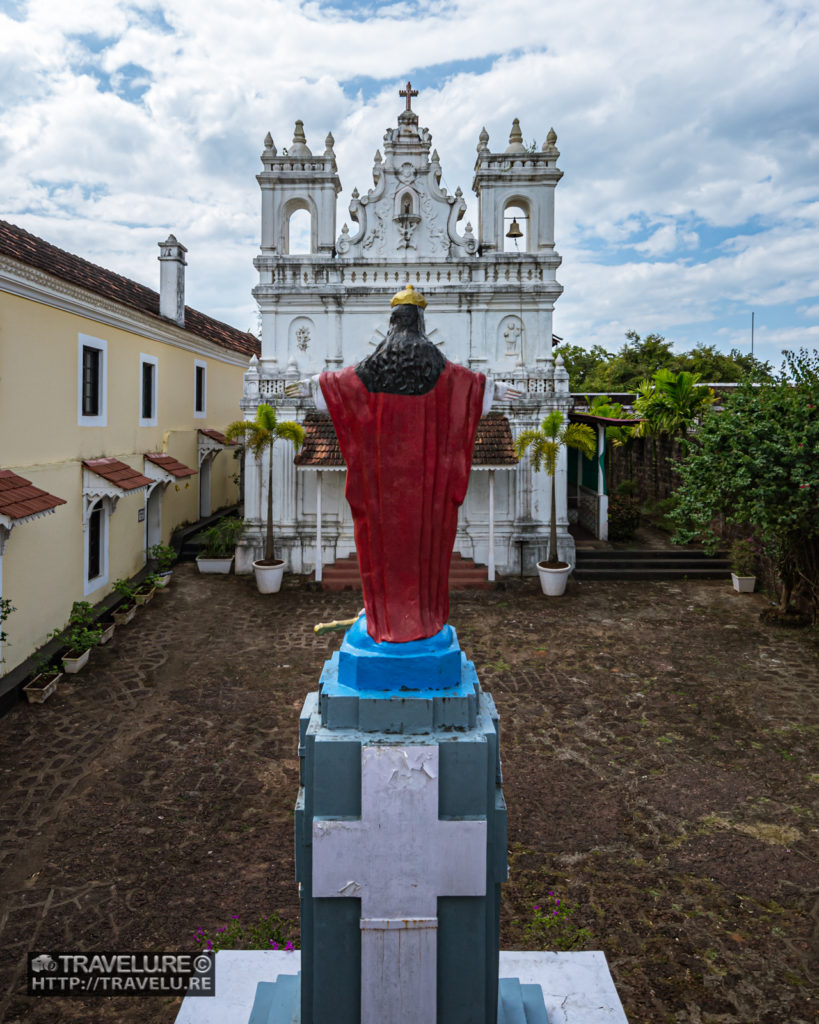
Further up in Pernem taluka, across the River Terekhol, there is a Church of Holy Trinity that lies within the precincts of Fort Tiracol. Built in the mid-eighteenth century, they rechristened it Church of St Anthony, and it opens for devotees only for special occasions like the annual feast held in May every year.
Spectacular Flourishes of Faith in Goa East of Panjim
From Tiracol, heading 55 km southeast, we arrive at Maharaja Dipaji Rane’s Fort. Housed inside the fort is Shri Vitthal Temple. In Sanquelim, this temple is 45 km east of Panjim. Rebuilt in 1942 by the Rane families who moved from Udaipur, it is on the banks of Valvanta River. Its interior is aesthetic, cavernous, and modern. Inside Shri Vitthal Temple, painted colourful pillars and a shiny mosaic flooring provide a refreshing departure from the usual dark, not-so-clean interiors of most temples.
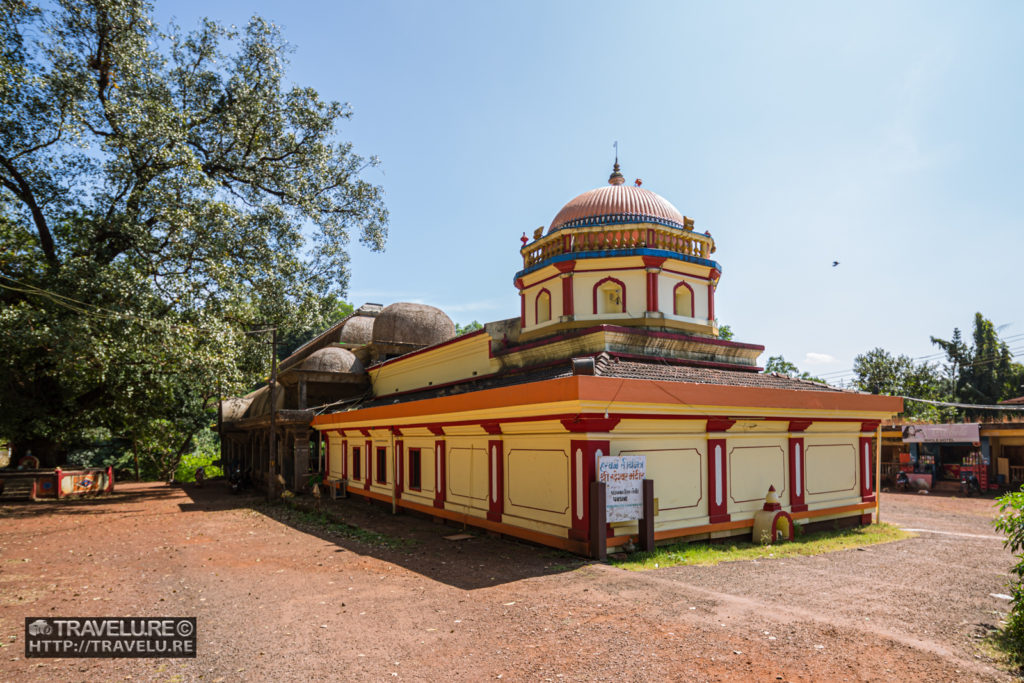
Close by is Rudreshwar Temple. It is a new temple built to house an ancient linga and is just a stone’s throw from the 6th-century Harvalem (Arvalem) Caves and the Arvalem Waterfalls.
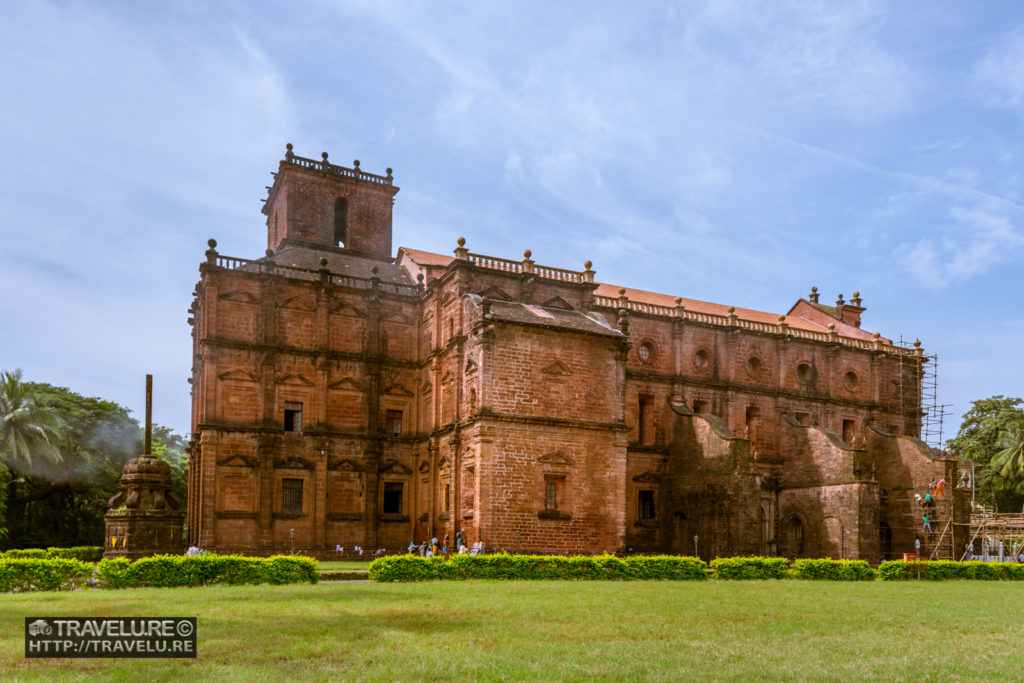
The UNESCO World Heritage Site
As you make your way back to Panjim, you’ll discover two splendid churches – the Basilica of Bom Jesus and Se Cathedral. The Basilica of Bom Jesus was built on the cusp of the 16th and 17th centuries. In Old Goa, it features on the list of UNESCO-inscribed Churches and Convents of Goa. It houses the mummified mortal remains of St Francis Xavier.
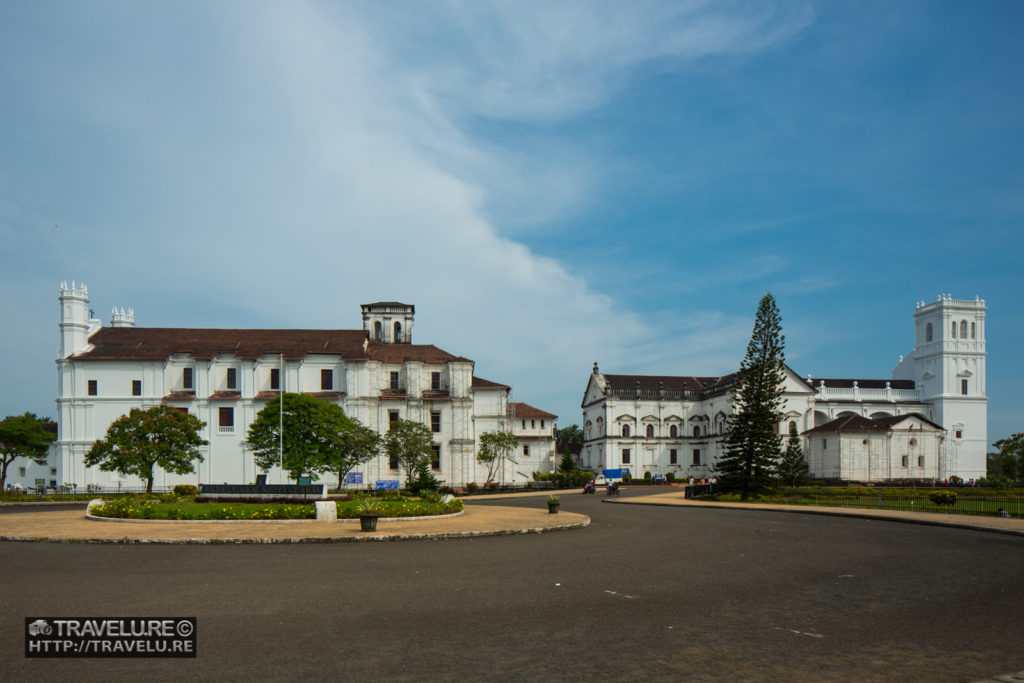
Across the road from the Basilica is Se Cathedral. This Cathedral took 57 years to build. It commemorated the victory of the Portuguese over the Bahmani Sultanate. One of its two towers collapsed in 1776, and they never built it again. This cathedral is also a part of the UNESCO inscription ‘The Churches and Convents of Goa’.
This ~150-km round trip is likely to overwhelm you with the sheer architectural awesomeness of the region. But then, there is a lot more. Wait for the second part of this series.


